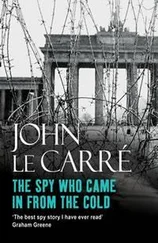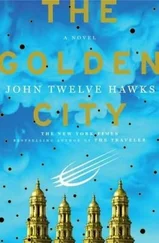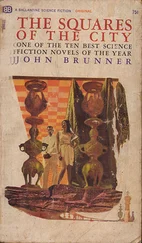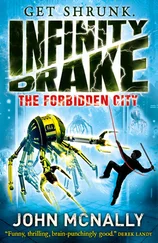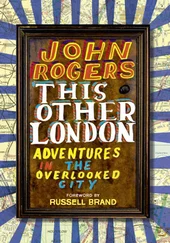John Cheney
CITY OF SPIES
Operation STOSS (later named ZENTRUM ) was a real plan for the invasion of West Berlin.
From 1985 to 1988, East German armed forces carried out Border’s Edge exercises, simulating this invasion.
During the 1980s, GDR military leaders ordered hundreds of the Bluecher Order for Bravery to be pressed. This medal was to be awarded only in time of war.
While the actual Operation STOSS documents were destroyed prior to German reunification in 1990, several former National People’s Army officers have confirmed the plan’s existence.
Most of the locations described in this novel were actual sites.
May 1995
The three men watched the growing dawn in silence, their motorboat cutting through the river’s still-dark waters toward an island at the heart of Berlin. Ahead lay the stately dome of the Berlin Cathedral, and just beyond it, their destination. It was a massive modern structure across the avenue from the Cathedral. The sun’s first rays brilliantly glinted off the bronze-mirrored facade of the building, long known as the Palace of the Republic.
No one noticed the three men dock the small motorboat on the riverside embankment of the Palace. While two men climbed onto the patio on the east side of the building, the boat pilot watched traffic move on the bridge above. The first man ashore was George O’Neill. Middle-aged, balding and paunchy, he wheezed slightly as he pulled himself up from the boat. Behind him was Sebastian, nearly fifteen years’ George’s junior and a far superior specimen of athleticism. Had he been raised in the 1930s, the Nazis would have used Sebastian as an Aryan poster boy. Sebastian easily jumped ashore with a large bag of equipment.
George glanced at his watch and looked to the third man, still at the helm. “Thirty minutes?”
The man nodded in agreement. Then he throttled the engine and soon disappeared under the bridge, heading upriver.
Sebastian pulled two white clean suits and respirator masks from the bag and threw a pair toward George.
“What’s this?”
“For the asbestos,” Sebastian replied. “They’ve already started pulling out fixtures on the interior.”
“Oh. Great.” George pulled on the suit. He hoped he would not become overheated before accomplishing his task. It was a balmy spring morning, and the sidewalks were already warm by seven o’clock. George ran a hand through his thinning black hair and hyperventilated as he pulled on his mask. Masks made him claustrophobic, but the prospect of having to wear all of this gear while moving through the ghostly building was even more distasteful.
The Palace, the former parliamentary seat of East Germany, had been closed since 1990 on the grounds of asbestos contamination. Many people, however, suspected this was merely a political maneuver, affirming the West had won in the process of German reunification.
Sebastian and George looked up at the bronzed-glass windows of the Palace looming before them.
“Here,” Sebastian pointed to their left.
George looked around, already shuffling uncomfortably in his suit. “I have no idea why we’re doing this,” he muttered to himself.
“What?” Sebastian turned to him, surprised.
George reddened under his mask. “Uh, nothing.”
Still, the mission seemed bizarre to him: why go after a document, supposedly hidden in a theater chair in the Palace of the Republic ten years ago? It had not been found in this many years, and more than likely the building would be razed before anyone else could go in and locate it. This was a needle-in-the haystack kind of assignment. An even larger question loomed on his mind: why would this document matter six years after the fall of the Wall? The Cold War was over, and the world had rapidly moved forward. But here he was, wearing a stifling asbestos-proof suit, hunting a museum piece.
Sebastian led George to a small door hidden in an enclave. Using a security key, Sebastian opened the padlock that chained the door shut. Sebastian pushed the door open. A whoosh of dusty and stale air came through the unsealed door. George followed Sebastian inside, closing the door behind them. Immediately they sensed they had breached a tomb. The inside of the Palace was considerably darker; only a dull light penetrated through the dusty golden windows. The noise of the traffic had faded.
The two men walked through the basement, passing empty information desks and newsstands now covered in dust and grime. Sebastian led George up a flight of stairs. They emerged in the grand foyer, an expansive room lit from the windows that ran from floor to ceiling in the front of the hall. In GDR times, this was referred to as the “lantern shop” because of the hundred globular glass lights that covered the ceiling. The foyer was decorated in a sparse but not altogether cold socialist aesthetic: off-white marble, beige and gold trim, with red paintings and furnishings. The room had faded far from its former glory. While the socialist murals remained, workers had haphazardly ripped out sections of wall and furnishings in the beginnings of their asbestos removal. A graffiti artist had even somehow broken his way into the building and spray-painted a message across the balcony in German: “Anarchy lives! All else crumbles.”
Feeling the pall of the building, George grumbled, “That makes sense.”
In a far corner, one of the lamps had fallen from the ceiling. Its glass lay in shattered bits on the parquet floor. George and Sebastian ascended the grand staircase to the third story.
Before them, a directional sign pointed toward two large doors: “Great Hall.”
“Here,” George called to Sebastian.
Sebastian shook his head. “ Noch eine . It’s in the balcony, no?”
George grunted in agreement. They climbed yet another stairway, and now stood before two large oaken doors on the fourth floor. George pulled at a handle, but the door would not budge. Sebastian slipped another key into the lock, and with some effort, turned it. The two men pulled together. The doors creaked with dust and disuse. Finally they saw the looming dark cavern of the Great Hall. George pulled out a flashlight and let its beam pierce through the pitch black of the hulking room. The Great Hall had 5,000 seats. All still remained intact, though two of the lower sections were folded upwards on an embankment. Like a high school gymnasium, the Great Hall had served as a multifunctional facility, and all of the lower seats could be raised on six separate embankments to make space for banquets and dances.
As George scanned over the seats, his jaw dropped. “How are we ever going to find it in this?” he said to himself, loud enough again for Sebastian to hear. “Uh, it’s B-37.”
“Over here,” Sebastian gestured, and the two men moved left along the balcony walkway. They headed down the aisle, focusing their flashlights on each of the rows, looking for the appropriate numbers. As their eyes adjusted, they noticed one pale shaft of light fall on a bank of seats on the right side of the Great Hall.
Looking up, George could see a hole in the ceiling. He wondered if it went all the way up to the sky. As far as he could tell, no water dripped from the hole, something he’d have expected if it extended through the roof. Two sections to the left, a bank of seats were covered with a blue tarp. George sighed at the massive number of chairs and shuffled his way down an aisle to begin counting the row and seat numbers. As he worked, his suit clung to him like a suffocating synthetic skin. He snarled into his mask as frustration surged through him. The Company finally sends me out to do something in the field, and this is it? A glorified usher in a toxic empty theater?
Читать дальше


